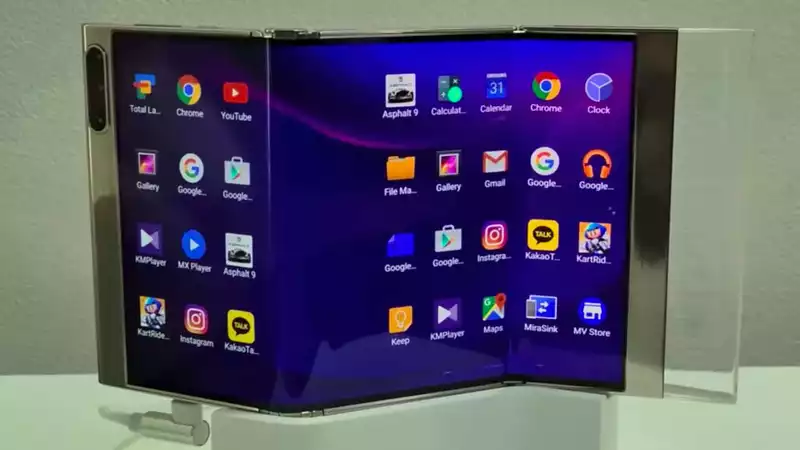Samsung's Galaxy Z Fold 3 and Galaxy Z Flip 3 are the most sophisticated folding phones ever and have impressed most reviewers. But if you're curious to know where Samsung plans to go next, it may have just provided a hint.
Samsung's "Flex In & Out," a three-part foldable that appeared as a real product at the International Meeting for Information Displays (IMID) 2021 conference in Korea (via TechSpot). It is a three-part foldable prototype. Although a bit rough around the edges, it convincingly demonstrates how phones like the Z Fold 3 and Z Flip 3 could evolve in the future.
The so-called "multi-fold double OLED" can be seen in the official Samsung Display video. Unfortunately, Samsung does not show the device in motion.
When fully unfolded, it is a 7.2-inch tablet, but more rectangular than the Z Fold 3's square inner display, and unlike the Z Flip 3, it appears to be intended primarily for use in landscape orientation. Thus, while it could theoretically be folded to the size of a standard smartphone, the concept is closer to that of a regular tablet.
Besides being used completely folded or unfolded, the device is supposed to be able to use different apps on different parts of the display. For example, in one part of the demo, Instagram, Photos, and the music player are used simultaneously, each occupying one of the phone's three panels.
While it is exciting to see Samsung bring the popular concept of a foldable phone to life, there are many questions about its practicality. The phone is going to be incredibly thick when fully folded, making it hard to fit in a pocket and therefore less practical as a phone. The width of the display does not seem to help either.
The device seems to have only one camera array, which is smart. There is no sense in wasting space when the same camera can be used for selfies and regular photos. However, these cameras are embedded in a huge bezel, much larger than what is needed to hold the phone firmly.
The important thing Samsung needs to do before bringing such a phone to market is to make it thin enough to fit roughly within the size and thickness assumptions of current phones. Otherwise, this looks like a feasible next step for a foldable phone from a company that currently makes the best foldable phones.










Comments